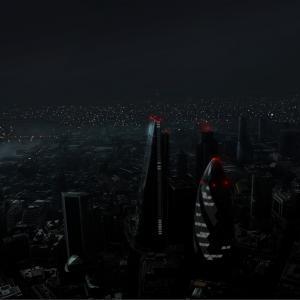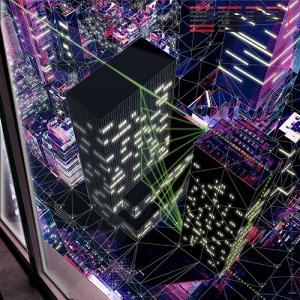1 November 2012 – Landing in New York one day after Hurricane Sandy, we witness a week of total informational blackout. The Big Apple, the city that never sleeps, has come to a standstill below 32nd Street. We are listening to the silence of the closed electronic trading floors of Wall Street and observe herds of informational nomads, armed with their power-hungry laptops, searching for any electrical output. We are lost without mobile signals, emails or texts and cut off from global positioning systems; unable to manoeuvre without cybernetic feedback; out of our comfort zones by being disconnected from a system that typically caters to our needs. All activity has been suspended. This is the city’s confession to its subservient architectural relation to our electronic informational infrastructure. Meanwhile Barrack Obama is re-elected and we are stranded at the airport waiting for another storm to pass.
Deeply rooted in the belief that the archi-tecture of today must face the challenges of a digitised and virtually immersed environment, Diploma 1 set out to design catalyst spaces and conditions that enhance and articulate digital space within -the urban frameworks between London and New York.
Investigating communication and system design, Gloria speculates on the absurdity of human dialogue in a technologically converted distant-communication network, while Kjetil proposes to use sensing devices to suggest that Heathrow’s Terminal 6 is a physical extension of the electronic cloud. Brian looks at how the transformation towards online courses and degrees may evolve into a new educational landscape typology situated in Mayor Bloomberg’s new zoning proposal. In project articulating architecture as constructs of desire and self-consciousness of a glutinous Schlaraffenland, Liza presents a digital vista of milk and honey while Goldshid explores the vanity of a self-obsessed global art market – the 24/7 televised post-industrial Warhol factory.
Through these projects we speculate upon prototypes for an architectural resolution and augment-ation of the networked electronic dream, questioning the infrastructural epitome of our time by defining architectural strategies for an informational behemoth inseparably amalgamated into every aspect of our life.
Unit Staff
Tobias Klein
Students
Lap Heng Fung
Kin Pong Ho
Gloria Pou Wai Lei
Yuwon Kang
Golshid Varasteh Kia
Soonil Kim
Sergej Maier
Ranet Phanphensophon
Kevin Primat
Kjetil Riegel
Liza Rudyk
Luke Shixin Tan
Special thanks to
Sam Joyce (Technical Studies consultant)
Denis Vlieghe (Workshop Term 01/Interactive programming consultant)
Dietmar Koering (Term 2 Workshop)
Critics
Random International: Florian Ortkrass and Hannes Koch
Douglas Murphy
Roberto Bottazzi
Will Hunter
Sam Joyce
Bryan Oknyansky
Javier Castanon
Matthew Butcher
Thomas Weaver
Kenny Kinugasa Tsui
Samantha Hardingham
Brett Steele
Denis Vlieghe
Carlos Villanueva Brandt
Mark Cousins
Sam Joyce
Ann-Sofi Rönnskog
John Palmesino
Scanlab Projects: William Trossell and Matthew Shaw
Michael Wiehart
Alex Haw
Madhav Kidao
Jon Ng
Francesca Hughes
Javier Castañón
Christopher Pierce
Ryan Dillon
Jose Sanchez
Sam Joyce
Suraj Vithlani
Serafino Di Rosario
Yorgos Loizos
Theodore Spyropolous
Robert Stuart-Smith
Nigel Coates
Ricardo de Ostos
Jon Goodbun
Jeroen van Ameijde
Evan Greenberg
Michael Weinstock
Ben Parry
Peter McCoughey
Alex MacKenzie
Oliviu Lugojan-Ghenciu
Elliot Payne
Andrew Beddard
Yu Won Kang
The observation and construction of the existence of time started from discovering the cosmic order and depicting the rhythmic cycles of nature to the ground, to the space, to the territory.
Our instruments of time measurement advanced from the archaic cosmic forms of Stonehenge to the largest machine-monument - 24 GPS satellites in operation with the distance of 20,000km from Earth. In this self-referential technological behemoth, the project questions the consequences the next time system has in our post-industrial society.
24 satellites, each equiped with an atomic clock in operational distance of 20,000km from Earth marking every point on the planets surface within the precision of 1 second in 3000 years - GPS - yet every year we need to calibrate our newly established technological meridian line.
Constructing a continuous monument of a new time standard will culturally engage and celebrate our behaviours towards technological revolution.


































































